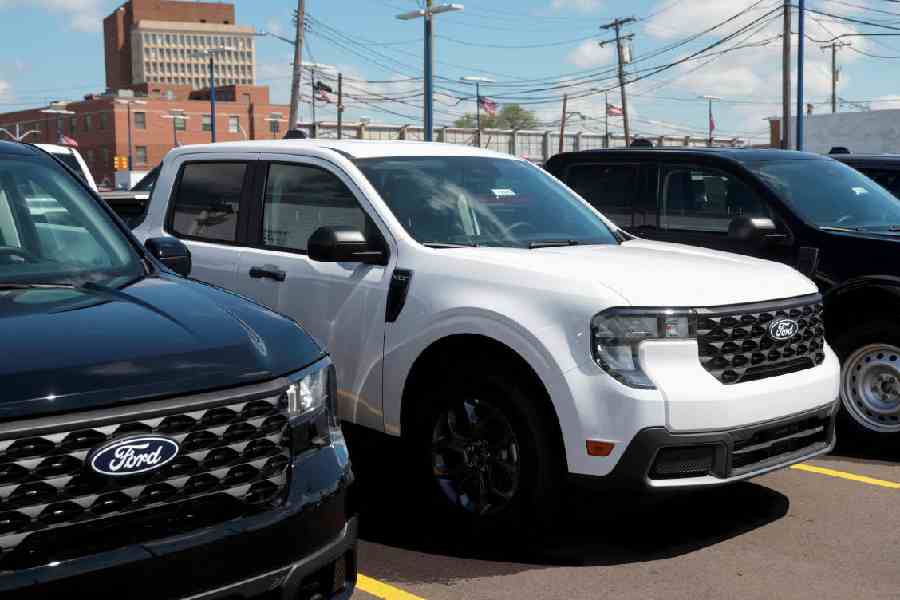Henry Ford’s moving assembly line changed work forever and not just ushered in the age of the car. The innovation reduced the number of workers required and reduced the time it took to assemble a car. It also gave the company more control over the pace. Ford says it has cracked the code again. On the one hand, there are plans to build low-cost electric vehicles at its Kentucky assembly plant, starting with a four-door, midsized $30,000 pickup truck in 2027. But the more important announcement involves the moving assembly line.
The company has unveiled its new “universal EV platform”, with Ford CEO Jim Farley calling it “the most radical change on how we design and how we build vehicles at Ford since the Model T”.
‘Assembly tree’
What Ford is looking at is a “tree” model — three separate assembly lines that eventually come together and build what you may call a sandwich. You will have a section working on the back end of the vehicle, one on the front end, and then comes the middle. They all fit together.
To make electric vehicles click, prices need to be reduced. Ford is targeting a price of less than $30,000, and the company claims it’s not a stripped-back vehicle; it will be well-equipped.
The automotive industry in the US is at a crossroads because there is competition, especially from China. Companies like BYD and new startups from around the world have ambitions in the auto space. They are all coming for legacy automotive companies.
At the moment, it’s largely a single assembly belt. In the traditional moving assembly line, you have one vehicle riding all the way down the line, and you just keep adding parts to it until the end of the line is reached.
Now, the vehicles will begin at three assembly lines where components keep getting built, and then at some point, everything snaps together, which will allow the company to offer the vehicle at a lower target price.
The platform reduces parts by 20 per cent versus a typical vehicle, with 25 per cent fewer fasteners, 40 per cent fewer workstations dock-to-dock in the plant, and 15 per cent faster assembly time. It will lead to a lower cost of ownership over five years than a three-year-old used Tesla Model Y.
The new platform will also be less complex. In the “new” assembly line model, workers will need to bend fewer times and there is less twisting. The new mid-sized truck, for example, will have an easier network of wires, cables, and connectors. The company estimates a wiring harness that’s 4,000 feet shorter and 10 kilograms lighter than Ford’s first-gen Mustang Mach-E.
More vehicles will be rolling out for the same productivity levels as before. Nobody is sure if cutting costs means cutting jobs. Will there be fewer people making EVs? We won’t see the product till 2027.
Sure, it may not change the world the way Model T did, which made Ford the number one automaker for decades. Ford is also getting into battery technology, which is the most expensive component on an EV. Ford is coming up with vehicles that will have prismatic LFP batteries. The company licensed the LFP technology from a Chinese company, CATL, the world’s largest battery maker. The new assembly line will help accommodate more interior space. The dashboard, for example, can be moved forward a bit more.
Another method
The traditional moving assembly line helped businesses, but for human workers, it felt monotonous. The horror of mass production is seen in films like Charlie Chaplin’s Modern Times and Fritz Lang’s 1927 film Metropolis.
The average price of a car in the US is around $50,000. Slate Auto, a Jeff Bezos-backed startup, says it can sell an American-made EV for almost half the price. Slate’s simple, low-tech, and customizable trucks and SUVs are expected to start rolling out at the end of 2026. The company says it has received over 100,000 refundable reservations in just two weeks.
But it is different from what Ford is trying to achieve. It’s a minimalist vehicle built for customisation. The truck offers hand-cranked windows, a barebones dash, and a modular platform that you can even transform into an SUV with a DIY accessory kit.










